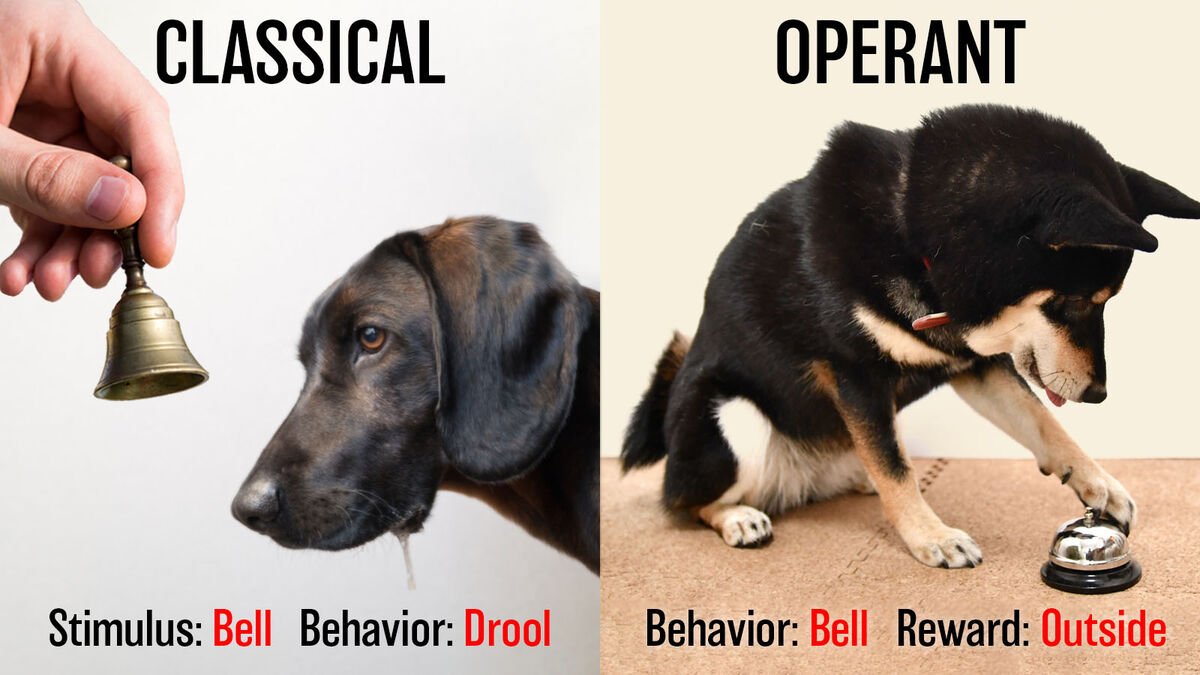Classical Vs. Operant Conditioning: Difference Unveiled

Classical and operant conditioning are two fundamental concepts in the field of psychology. The key difference lies in the way behavior is learned and reinforced.
In classical conditioning, learning occurs through the association of stimuli, while operant conditioning involves learning through consequences of behavior. Understanding the distinction between these two forms of conditioning is crucial for comprehending how we learn and adapt to our environment.
Understanding the Difference Between Classical and Operant Conditioning
Welcome, young learners, to an exciting journey into the world of psychology! Today, we will explore the fascinating concepts of classical and operant conditioning. Have you ever wondered how our brains learn new things? Well, these two types of conditioning play a significant role in shaping our behaviors and responses to the world around us. Let’s dive in and discover what sets classical and operant conditioning apart.
What is Classical Conditioning?
Classical conditioning is a type of learning that occurs through associations between different stimuli. This concept was first introduced by the famous Russian psychologist, Ivan Pavlov. Have you heard of Pavlov’s dogs? They were a crucial part of his experiments that led to the discovery of classical conditioning.
The Basics of Classical Conditioning
Imagine this: every time you hear the sound of a bell, you know it’s time for dinner. Your brain automatically connects the bell with food, and you start feeling hungry just by hearing the bell ring. This is a simple example of classical conditioning in action.
In classical conditioning, there are three essential elements:
- Unconditioned Stimulus (US): This is a stimulus that naturally triggers a response without any prior learning. In our example, the food is the unconditioned stimulus that naturally makes you feel hungry.
- Unconditioned Response (UR): This is the automatic response to the unconditioned stimulus. Feeling hungry when you see food is the unconditioned response.
- Conditioned Stimulus (CS): This is a neutral stimulus that, after being paired with the unconditioned stimulus, triggers a conditioned response. The bell, in our example, becomes the conditioned stimulus when it is associated with food.
What is Operant Conditioning?
Now, let’s move on to operant conditioning, which is another way we learn from our environment. Unlike classical conditioning, operant conditioning focuses on the consequences of our actions. This concept was introduced by the American psychologist, B.F. Skinner.
The Basics of Operant Conditioning
Operant conditioning involves changing behavior by using reinforcement and punishment. Reinforcement increases the likelihood of a behavior repeating, while punishment decreases it. Let’s break it down further:
Reinforcement can be positive (adding something desirable) or negative (removing something undesirable). For example, if you clean your room and get a sticker (positive reinforcement), or if you do your homework to avoid a scolding (negative reinforcement).
Punishment, on the other hand, can also be positive (adding something undesirable) or negative (removing something desirable). An example could be receiving extra chores for misbehaving (positive punishment) or losing TV privileges (negative punishment).
Comparing Classical and Operant Conditioning
Now that we have a good grasp of both classical and operant conditioning, let’s compare the two and see how they differ in some key aspects:
1. Focus of Learning
In classical conditioning, the focus is on creating associations between different stimuli. On the other hand, operant conditioning emphasizes the consequences of behavior.
2. Types of Responses
Classical conditioning deals with involuntary responses or reflexes, while operant conditioning deals with voluntary behaviors that are influenced by consequences.
3. Role of the Learner
In classical conditioning, the learner is a passive recipient of stimuli and responses. In contrast, operant conditioning involves the learner actively engaging in behaviors and learning from the outcomes.
4. Types of Conditioning
Classical conditioning involves pairing two stimuli to create a learned response, while operant conditioning focuses on shaping behavior through reinforcement and punishment.
Real-Life Examples
Let’s explore some real-life scenarios to better understand how classical and operant conditioning work in our daily lives:
Classical Conditioning Example
Have you ever felt happy and excited when you see your favorite cartoon characters on TV? That’s because you have associated those characters with the joy of watching their adventures. Over time, just seeing the characters can make you feel cheerful, thanks to classical conditioning.
Operant Conditioning Example
Imagine your parents give you a treat every time you help with the household chores. Eventually, you begin to enjoy doing chores because you know you will be rewarded. This is an example of operant conditioning, where the treat serves as positive reinforcement for your helpful behavior.
Congratulations on completing this exploration of classical and operant conditioning! These psychological concepts help us understand how we learn and adapt to the world around us. Remember, whether it’s hearing a bell and feeling hungry or receiving a reward for good behavior, our brains are constantly learning and evolving through these processes. Keep your curiosity alive, and stay curious about the wonders of the mind!
Until next time, happy learning!
Be sure to share your thoughts and questions in the comments below.
The difference between classical and operant conditioning – Peggy Andover
Frequently Asked Questions
What are the key differences between classical and operant conditioning?
In classical conditioning, an involuntary response is linked with a neutral stimulus, while in operant conditioning, behaviors are reinforced or punished to either increase or decrease the likelihood of their recurrence.
How do classical and operant conditioning differ in terms of the type of learning involved?
Classical conditioning involves learning through association, where two stimuli are paired together to produce a new learned response. On the other hand, operant conditioning focuses on shaping behavior through consequences like reinforcement or punishment.
Can you explain the role of the learner in classical versus operant conditioning?
In classical conditioning, the learner is passive and responds automatically to a stimulus. In contrast, operant conditioning requires the learner to actively engage in behaviors to receive reinforcement or avoid punishment, making the learner’s actions more central to the learning process.
Final Thoughts
In conclusion, the key difference between classical and operant conditioning lies in their approaches to behavior modification. Classical conditioning pairs a neutral stimulus with a naturally occurring stimulus to evoke a response, while operant conditioning uses reinforcement or punishment to strengthen or weaken behavior. Understanding what sets classical and operant conditioning apart is crucial in determining which method is most appropriate for desired behavior changes.







